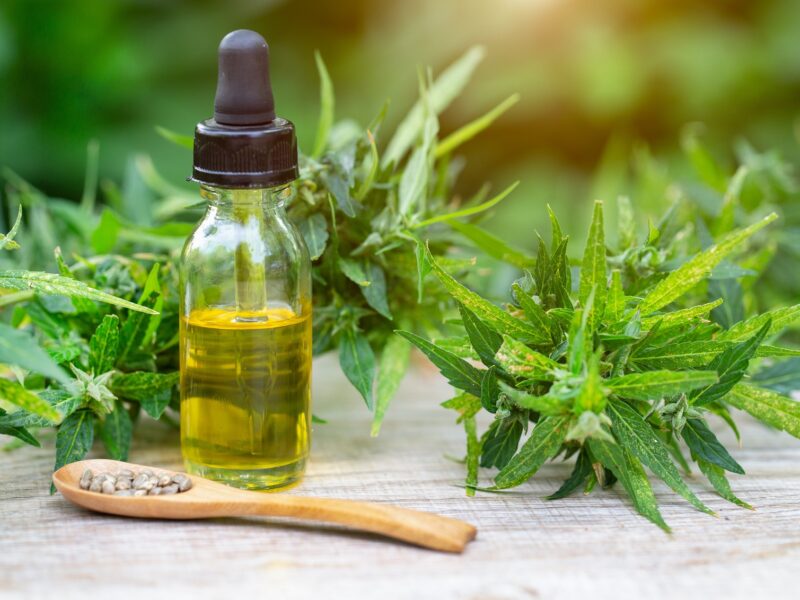
The Potential Benefits Of Marijuana And CBD For Alcohol Withdrawal Relief
For many of us, quitting alcohol entails nothing more complicated than downing our final beer and calling it a night. With big drinkers, things aren’t that straightforward. They endure symptoms after their final drink that range in intensity from nausea and trouble sleeping to hallucinations and seizures. Can cannabis be used to lessen alcohol withdrawal symptoms?
We are all aware of the severe withdrawal symptoms associated with hard narcotics, yet many of us ignore those associated with stopping alcohol. Going cold turkey might produce severe symptoms, including the potentially fatal disorder delirium tremens. Can cannabis help heavy drinkers quit the bottle while reducing the withdrawal symptoms? Learn more below.
Prior to using cannabis in Yonkers, obtaining a medical marijuana card is a necessary requirement to legally access medical cannabis. Acquiring a medical marijuana card is a convenient and uncomplicated process that can also be completed online.
Understanding Alcohol Withdrawal
Alcohol withdrawal, sometimes referred to as alcohol withdrawal syndrome (AWS), happens when someone who consumes alcohol frequently abruptly ceases or significantly reduces their intake. Alcohol is a depressant that affects the brain’s neurochemical equilibrium in two main ways.
The actions of gamma-aminobutyric acid (GABA) at GABA receptors are first enhanced by alcohol. Increased levels of GABA, the brain’s main inhibitory neurotransmitter, are what cause drinking to have its calming and anxiety-relieving effects. Because glutamate, the main excitatory neurotransmitter, is inhibited, alcohol further reduces brain activity. The balance between these important neurotransmitters alters over time as a result of regular and continuous alcohol consumption, including the downregulation of GABA inhibition, which produces a spike in glutamate release when heavy drinkers abruptly quit. Increased glutamate levels without enough GABA to control the excess cause hyperexcitability, which may cause nerve damage and a variety of unpleasant symptoms.
Distinguishing Between Alcohol Withdrawal, Alcohol Use Disorder, and Alcoholism
AWS stands for a group of symptoms that heavy drinkers experience when they abruptly stop drinking alcohol. The symptoms of the condition, which range in intensity from mild anxiety to convulsions, are brought on by chemical changes in the brain.
Alcohol use disorder (AUD) and alcoholism are two terms that are used interchangeably to refer to dangerous patterns of drinking rather than a collection of symptoms. But there are distinctions between AUD and alcoholism. The Diagnostic and Statistical Manual of Mental Disorders 5 (DSM-5) lists AUD as a clinical diagnosis. Clinicians must recognize at least two of the eleven criteria in patients in order to make a diagnosis, including:
- Exceeding Planned Consumption
- Struggling to Cut Down on Drinking
- Prolonged Health Issues Due to Excessive Alcohol Use
- Difficulty Focusing Due to Alcohol Cravings
- Neglecting Family and Responsibilities
- Persistent Drinking Despite Relationship Issues
- Reduced Engagement in Once-Valued Activities
- Risky Situations Linked to Alcohol Use
- Continued Drinking Despite Coexisting Mental Health Problems
- Increased Alcohol Intake Due to Tolerance
- Encountering Withdrawal Symptoms
Depending on how many of these symptoms patients exhibit, doctors can then determine the extent of AUD:
- 2-3 points for mild
- 4-5 points for moderate
- 6 or more points for severe
The non-medical word “alcoholism” refers to alcohol dependence generally, outside of a medical diagnostic, whereas AUD is a clinical diagnosis.
Alcohol Withdrawal Symptoms
Alcohol withdrawal syndrome symptoms can start anywhere between six hours and many days after someone quits drinking. They range in intensity. Following abstinence, the following symptoms frequently worsen during the first two to three days and include:
- Insomnia
- Tremors
- Nausea
- Increased heart rate
- Headache
- Irritability
- Sweating
- Nightmares
- Confusion
- High blood pressure
Patients who have severe alcohol withdrawal syndrome may also experience delirium tremens (DT), a potentially fatal disorder. The following symptoms appear as a result of the central nervous system becoming overactive:
- Extreme confusion
- Visual hallucinations
- Extreme agitation
- Tactile hallucinations
- Auditory hallucinations
- Fever
- Excessive sweating
- Seizures
Cannabis and Alcohol Withdrawal
Where does cannabis fit into this scenario, then? Can cannabis aid with alcohol withdrawal? Also, could smoking marijuana or vaping make matters worse? There isn’t much study on cannabis use in this situation, although early studies looked at how well its components reduced alcohol consumption and lessened the effects of alcohol withdrawal. We need to briefly discuss the endocannabinoid system (ECS) to have a concept of how cannabis may modify neurotransmitter firing in a way that buffers against AWS symptoms.
What role does marijuana play in this context, then? Can cannabis help those who are quitting alcohol? Could vaping or using marijuana worsen the situation? Although early studies looked at how well its components lowered alcohol consumption and lessened the consequences of alcohol withdrawal, there isn’t much research on cannabis use in this context. To understand how cannabis could alter neurotransmitter firing in a way that protects against AWS symptoms, it is necessary to briefly examine the endocannabinoid system (ECS).
Endocannabinoids can move anterogradely, which means they move from presynaptic neurons to postsynaptic neurons, just like other neurotransmitters like dopamine and serotonin can. They do, however, have a special property that allows them to regulate the amount of incoming traffic to postsynaptic neurons. To do this, they traverse the synaptic cleft backwards, bind to the CB1 receptor on presynaptic neurons, and prevent the release of both GABA and glutamate.
Through activation of the CB1 receptor, endocannabinoids regulate homeostasis in the central nervous system. THC is one of the cannabis-derived cannabinoids that has the ability to bind to and activate this site. The glutamate surge that drives the symptoms of alcohol withdrawal syndrome may be controlled by some cannabinoids as a result of this. According to 2016 research, THC, the primary psychoactive component of cannabis, inhibits glutamate synaptic transmission by interacting with CB1. Future research will presumably reveal additional cannabinoids that can inhibit glutamate and determine whether this interaction is effective in reducing the symptoms of alcohol withdrawal.
The Use of Cannabis in Managing Alcohol Withdrawal
Can marijuana use ease the effects of alcohol withdrawal? Although science hasn’t discovered it yet, humans have been using the herb for this reason nevertheless. There are numerous methods to take cannabis; perhaps, research will eventually identify the route of administration and dosage recommendations that are most effective for treating alcohol withdrawal syndrome. Check out the common ways that cannabis is used below while you wait.
- Smoking
Smoking marijuana flowers is a popular marijuana consumption method. Various buds contain significant amounts of THC, CBD, or both in equal amounts. When smoked, cannabinoids quickly reach the circulation through the lungs’ alveoli. Smoking exposes users to a variety of health concerns, particularly respiratory ones, despite its quick onset.
- Vaping
Similar to smoking, vaping has an immediate impact. However, vaporizers employ lower temperatures than combustion to release cannabinoids, terpenes, and other components. This may reduce the risk to health, but it does not totally eliminate it.
- Edibles
Gummies and other edibles are included in the category of oral administration. Consuming meals infused with cannabis causes cannabinoids to go through first-pass metabolism. In the liver, THC undergoes this transformation into a far more powerful molecule. As a result, edibles provide a psychoactive high that is stronger and lasts longer after it begins. Cannabinoids have poor bioavailability, and a significant concentration doesn’t get into the bloodstream, even though oral administration eliminates the hazards related to smoking and vaping.
In Yonkers, the legal consumption of cannabis requires possession of a medical marijuana card. Obtaining an online medical card from the comfort of your home is a convenient and straightforward process.







